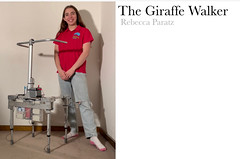South Australia
Year 3 – 4
First Place
Litter Buggie
Kiaus Feast, Rylan Mckenzie
Morphett Vale East Primary School
We found that around our school yard there was a lot of litter destroying our beautiful garden and oval. We wanted to fix this. We came up with the idea of creating a robot that locates rubbish, identifies what type of rubbish it is and what bin it goes in (recycling, 10c or landfill). It then locates the closest bin and empties into it. This invention will help keep our school clean and beautiful.
Second Place
On the Moon
William Morgan, Wade Hughes, Silas Farrelly
Morphett Vale East
We found that not all families are able to afford gaming consoles and video games, this leaves kids feeling left out at school and feeling sad. So, we wanted to make a free game, for everyone to access to help students feel more included and reduce bullying at school.
Third Place
Mantarone
Leon Chapman, Max Bartlett
Scotch College Adelaide Junior School
When we looked at the world data about air pollution, we were shocked to find lots of countries had air pollution problems. We research to find how air pollution affects animals, people and the environment. Air pollution can kill you, it can give you cancer, lung disease and can lead you into hospital. Then we came up with an idea to use a drone to clean the air, we thought aeroplanes used too much energy so were not a good option. First, we researched how drones work and also how air purifiers work. To get the best result, we thought we could swarm our drones and fly them in a lawn mower pattern. We reached out to Bryce at Air Clean to ask him for feedback about our idea. We are continuing to develop our idea based on feedback from experts. Our idea is a little like how water filters through a manta ray when they are swimming through the water collecting plankton
Year 5 – 6
First Place
Naturabot
Owen Sim, Spencer Djurasevich, Leon Poblocki, Finn Gilbert-Rugless
Scotch College Adelaide Junior School
First we looked at what the main natural disasters are that affect South Australians and then the current warning systems; Alert SA, The BOM, SES in SA. When comparing warning systems, we found that the data changed between systems – We thought this might create anxiety for some people. We also looked at how people were warned during serious natural disasters so that they could evacuate or respond in the right way. We had lots of questions for experts but found it difficult to get responses to our questions. We interviewed 2 students who were affected by the 2019 Cudlee Creek bushfires. One of the students runs a charity for people affected by bushfires and has now extended to all natural disasters – Naturally Brave. They currently don’t have a website or app so would love for us to create one for them. We are also investigating including a chatbot which people can chat to post natural disaster. Our senior school head of Digital Technologies Dr Jackson is mentoring us when training our chatbot (we’re hoping to use Poe platform with adult support). We need to understand how chatbots work before understanding how to train it.
Second Place
Gaming Timer
Jake Balaza, Alexander Bui
Morphett Vale Primary School
My goal for this project is to create a timer that will limit gaming time because people spent way to much time playing games. This timer will have to be set for a time limit and after when the timer runs out it makes a annoying noise that will play forever until you unplug it.
This project relies on the technology of micro bit and a possibly loud speaker. These integral pieces of technology performed by setting a time on the device than setting it to a far surface so that you need to stand up and unplug the device. While your there it encourages your to go outside and be active.
I choose this project because I have noticed a lot of people spend to much time playing games and their eyes become really weak until probably the biggest words become blurry, also when people play a lot they are not very active so this device is also going to attempt to help that.
I have considered the sustainability of the product and therefore have made the following considerations: The product will use as little material as possible to ensure that it is safe for the environment.
Third Place
Automatic Dishrack
Alex Oats, Curtis Rendell, Jack Bulter
Morphett Vale Primary School
My goal for this project was. to work as a team a get are project done By creating the self-drying dish rake (dry it ) if you are in a hurry and you don’t have time to dry your dishes it will dry it for you. explain how it will help. This project relies on the technology of fans These integral pieces of technology perform by I choose this project because I have noticed a lot of the time you don’t have any time so are dry it dishes rake will have it done in know time. I have considered the sustainability of the product and therefore have made the following considerations are project is good for the environment because the material is not bad for environment.
Year 7 – 8
First Place
SmartFoods – An app to stop food waste
Hayden Kong
Pembroke School
Smartfoods is a helpful and functional app that helps people reduce food waste by reminding them when their food is going bad.
Here are the functions of my app:
- Home: A dashboard that displays data and widgets on how well you are at reducing food waste (compared to others and/or the past month)
- MyFood: A place where you add and display all the foods you have at home, including the amount and the expiry date. The app will remind you when one of your foods is about to expire or go bad. The system can automatically input expiry dates for fresh produce.
- MyLocal: A place where you can donate extra or spare food which is still in good condition with neighbours or food charities/banks
- Cookbook: A place where artificial intelligence searches the internet for recipes based on the foods you have(based on MyFood)
Food waste is a massive problem with many consequences. It leads to environmental damage, wastage of valuable resources, economic losses, world hunger, and more. We waste 7.6 million tonnes of food each year, 70% of this is perfectly edible. SmartFoods can prevent this by reminding you what foods will expire soon and allowing you to give spare or extra foods to other people or food banks.
Second Place
Intelligent Bin
Charles Tang
Intelligent bin is a smart bin that uses artificial intelligence and machine learning to segregate different kinds of rubbish. Rubbish that isn’t being sorted properly is an increasingly large issue that must be stopped. When all your rubbish is dumped into landfill, as it decomposes it releases methane, which, coincidentally, is one of the most harmful greenhouse gases and a major cause of global warming and climate change. By accurately sorting out rubbish instead of dumping it all together it not only takes up less space, but it also makes the world a more sustainable place and reduces our ecological footprint, as well as being better for public health and the environment.
By sorting and separating rubbish like plastics, metals, and papers, the rubbish will take up less space, pollution will be substantially reduced, and reusable materials won’t be wasted. If rubbish is dumped into landfill, then will eventually be dumped into the ocean, becoming a part of a floating garbage patch it the ocean. Most of the rubbish in garbage patches could’ve been recycled to save money, but it would now take hundreds of million dollars to remove and is not a pleasant habitat for animals.
Year 11 – 12
First Place
A walk in the park
Stuart Vass
Independent Entry
A game where you wander an island, looking adventure, running with the wind, playing with the trees.
The landscape and all graphics generate on the fly. From the movement of your character to the way the trees sway in the wind, is simulated behaviour using scientific understanding of interactions. Mathematical equations are used to create stacked 2D images (“sprite stacking”) that appear to look and behave like moving 3-Dimensions.
This comprehensive yet simple program could be further extended and applied to an RPG/top-down game. This creates a unique style that isn’t used in many games, and because it’s pseudo 3D, the rest of the game can be coded as if it was a regular 2D RPG.



